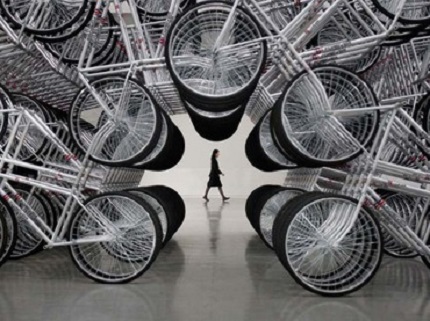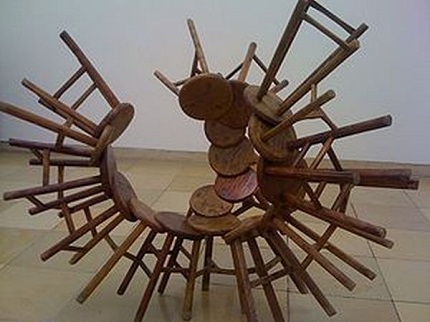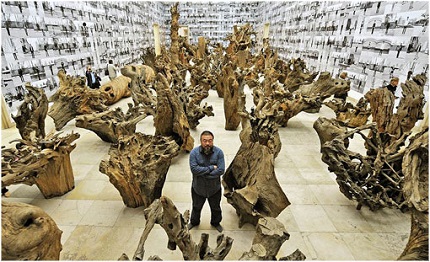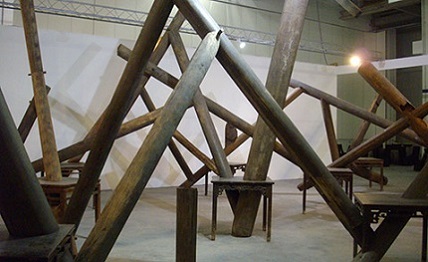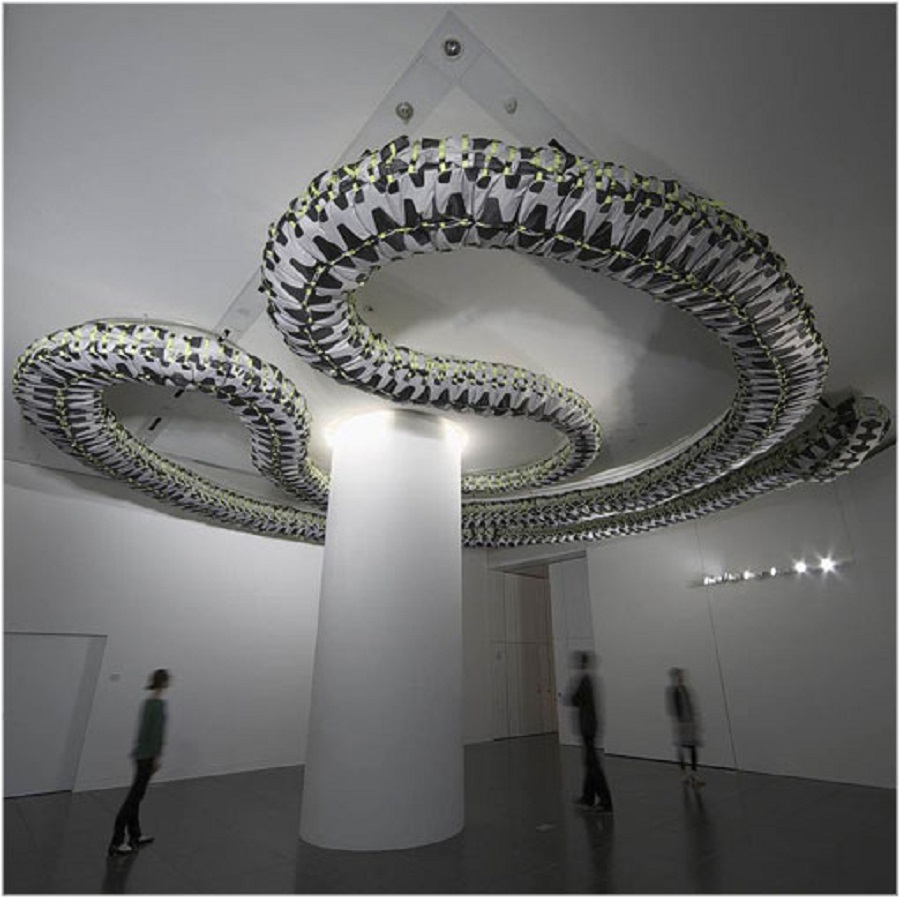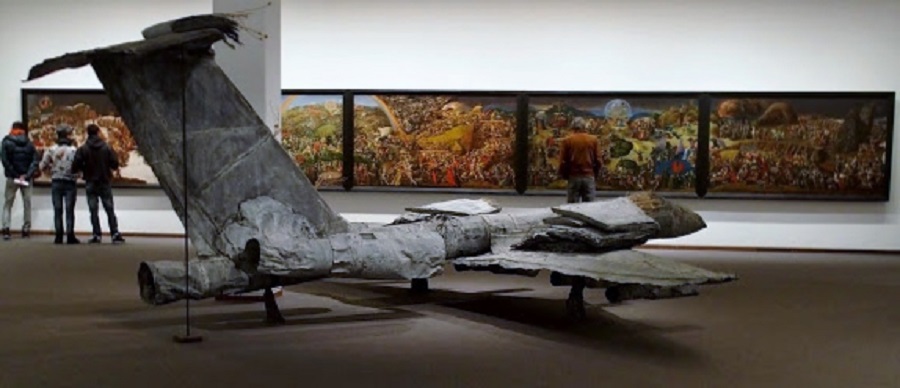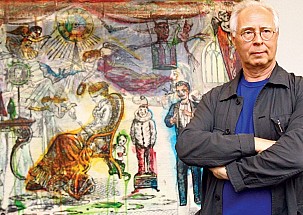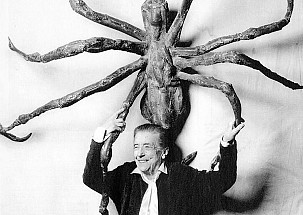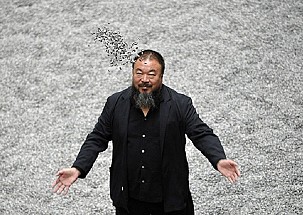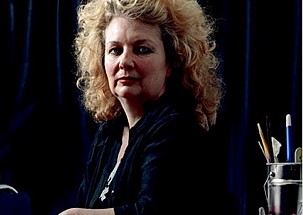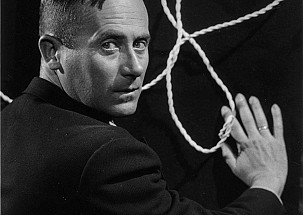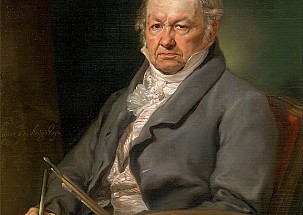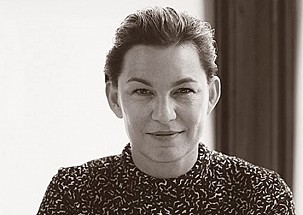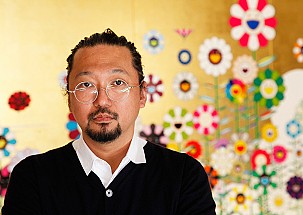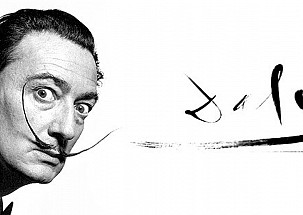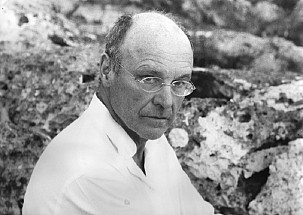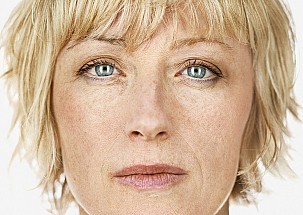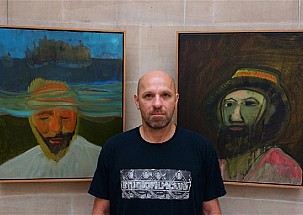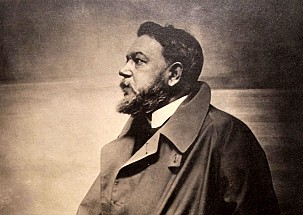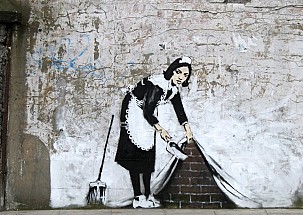- Details
- Written by Clelia
Anselm Kiefer, one of Germany’s great living artists and son of an art teacher, was born in Donaueschingen in 1945 but spent his childhood in Rastatt, later studying art in Freiburg im Breisgau. He studied under the tutelage of Joseph Beuys and showed great promise from an early age, but he also studied Law and French. His beginnings in the art world were via happenings and installations; it wasn’t in fact until the 70s when he began painting.
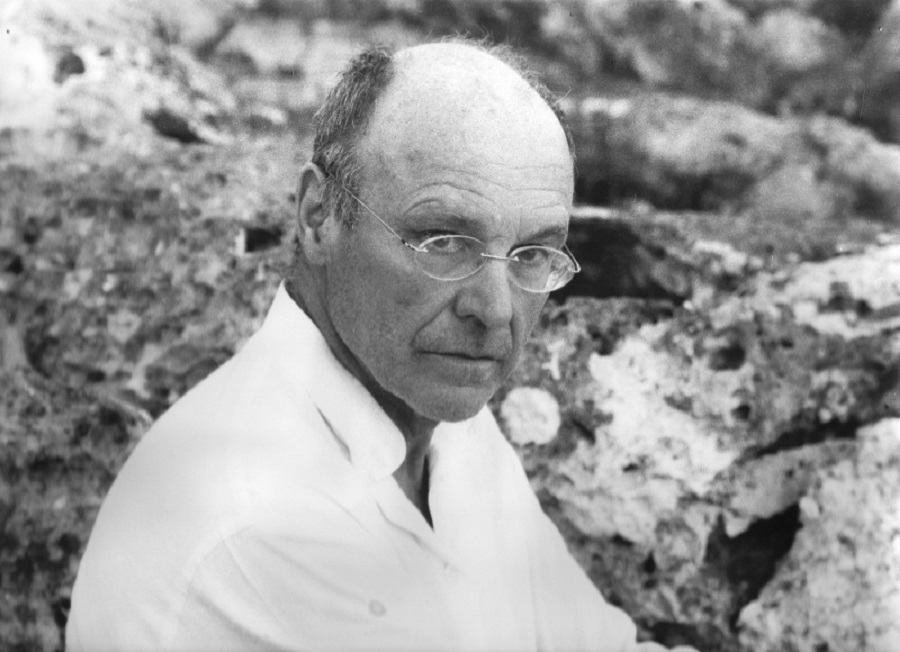
Kiefer’s genius is best seen in his matiérisme form of art, where he confronts the past head-on, and in particular certain subjects that are still taboo from the perspective of German Nazi history.
His famous painting “Margarethe” represents poet Paul Celan’s experiences in concentration camps, which the painter gleaned from Celan’s poems.
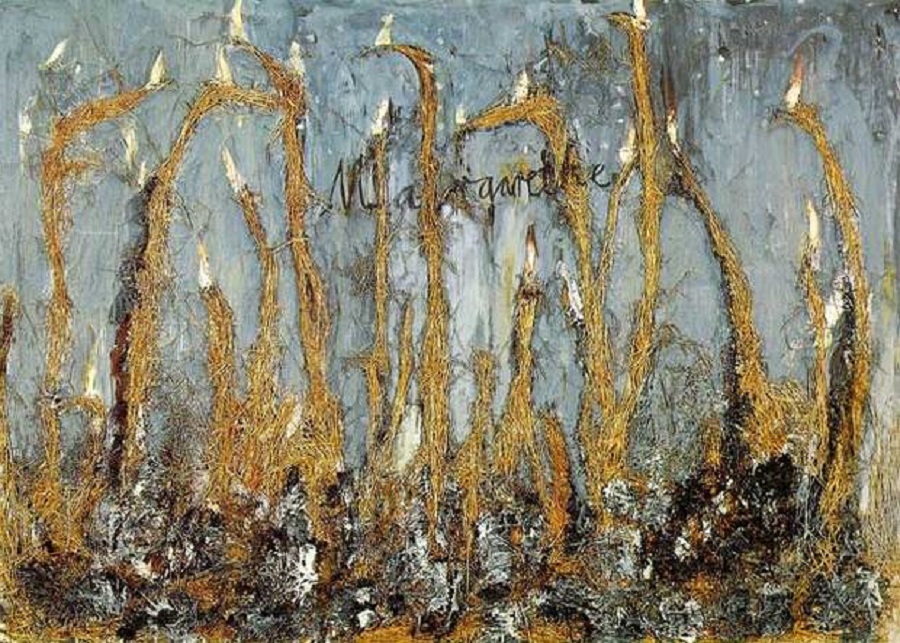
During the 70s, Kiefer began to emphasize the mysticism of the Jewish and German communities through works which contained specific symbols, letters, names, historical landmarks, etc., inspired in no small part by his wide-ranging literary knowledge. In his paintings one can clearly see the influence of his tutor Beuys, as well as of key philosophers such as Heidegger and Foucault. His language is characterized by historical and mythological themes, which he uses in an attempt to keep the traditions of his land alive in the present, but also to face the errors of the past and to heal the deep wounds left behind by Nazism, which explains the Hitler and Wagner references in his work, as well as the Nibelungen and Kabbalah symbolism.
He started working with thick layers of paint on wood and glass, on collages, using monochromatic colours and mixing with plaster, lead, ash, etc. In works such as The Order of the Angels (1983) he even used military equipment and scrap material.
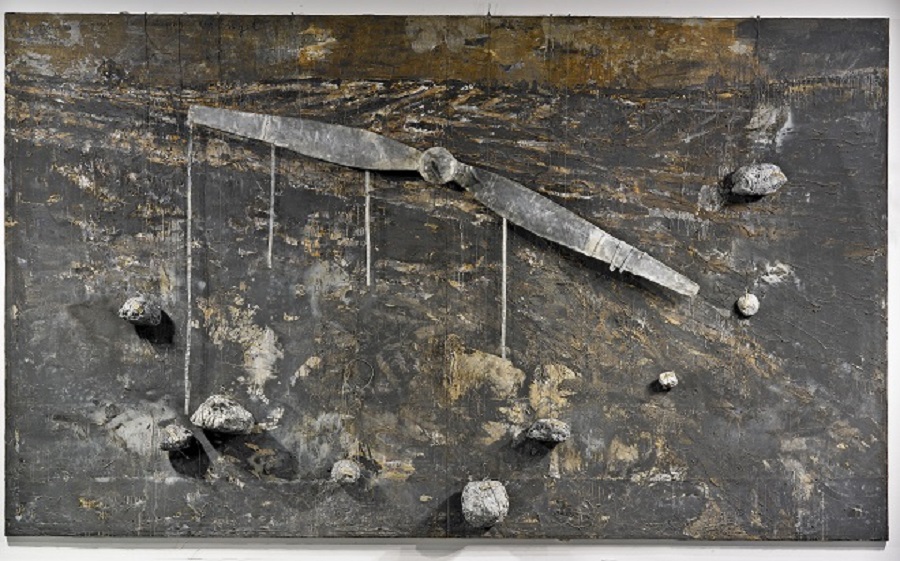
In the 90s he travelled the world, continuing to work on such universal themes as the mind and spirit, without leaving behind his interest in history and myth. In 1993 he moved to Barjac, near Avignon, where he has since set up a studio where he can work with different materials.
Kiefer merges photography, painting, sculpture and collage in a unique way; among his best solo exhibitions are a series of works exhibited in Karlsruhe in 1969 titled Occupations, also exhibited at the Documenta event in Kassel (1977, 1982 and 1987).
He has taken part in a number of art Biennales: Venice (1980), Städtische Kunsthalle in Düsseldorf (1984) and Paris (1985). Bilbao’s Guggenheim houses a large selection of his work, but the most relevant is his retrospective at the Neue Nationalgalerie, consisting of 140 works ranging from 1962 to 2011. This exhibition, more than any other, allows visitors a deep-dive into the artist’s personal reality, a world both figurative and abstract at the same time.
The artist exhibited last year in A Coruña with a collection of his sculptures and paintings, together with videos about the artist’s work by Tino Calabuig and a book publication on his career.
His work is visionary: he often pays tribute to German thinkers, poets and philosophers through historical resources and theatrical techniques, aided by temporal perspective. His interpretations are magnificent and very different to those of other painters. His overarching belief is in the dialogue between Man and history, and his mission is to revitalize art while facing up to the horror lived by his people, reconciling it with the past.
His next exhibition will take place this September in UK — the Royal Academy will host a retrospective of his works, including illustrations, watercolours, sculptures, books, photographs, installations and of course paintings.
Anselm Kiefer is a masterful creator, highly articulate in art, an intellectual who is able to communicate a message in each one of his history-laden pieces, with all the ambition of the greatest Masters of art.
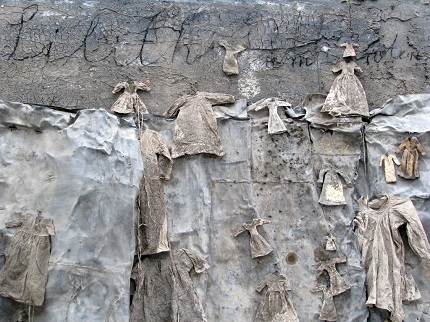
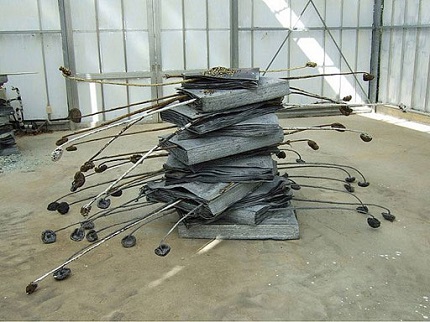
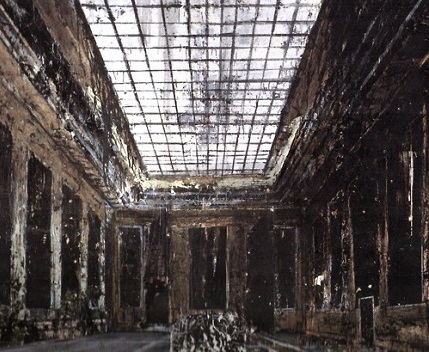
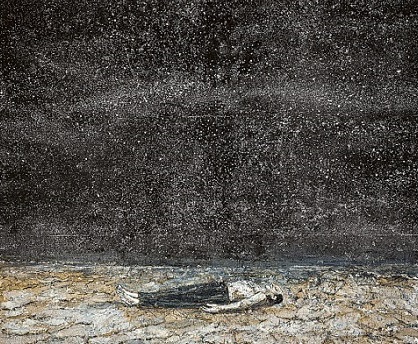
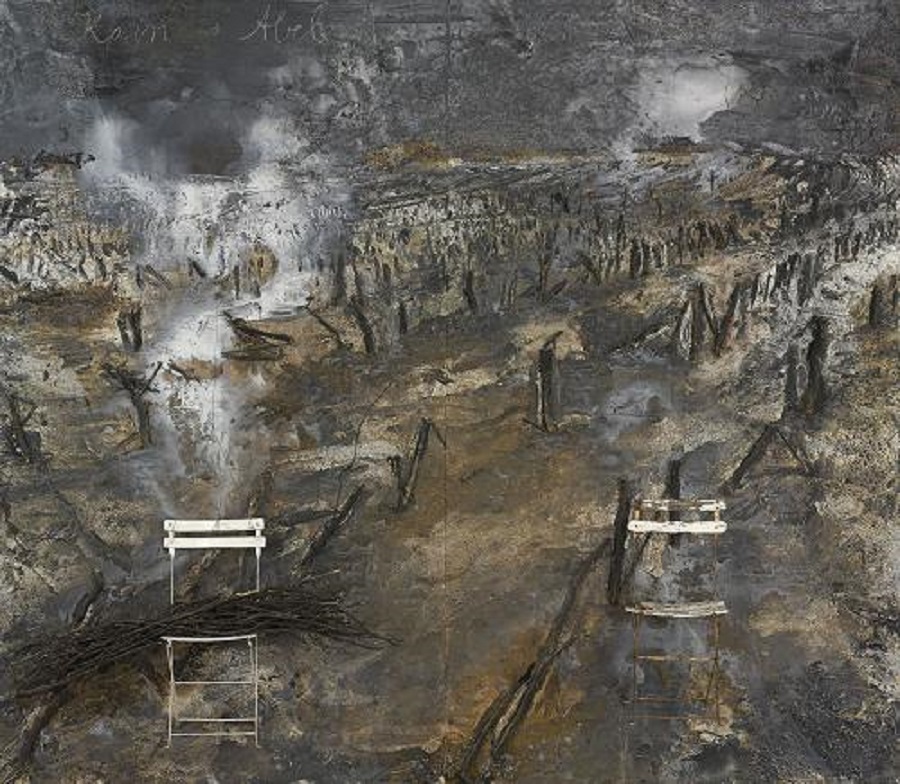
- Details
- Written by Clelia
John Currin was born in 1962 in Boulder, Colorado. He studied art in the United States at a number of different art schools.
His figurative style of painting unapologetically focuses on human sexuality and often on gestures and poses. He at once admires and transforms the work of the great Masters, and his approach to femininity is overtly satirical and subtly provocative.
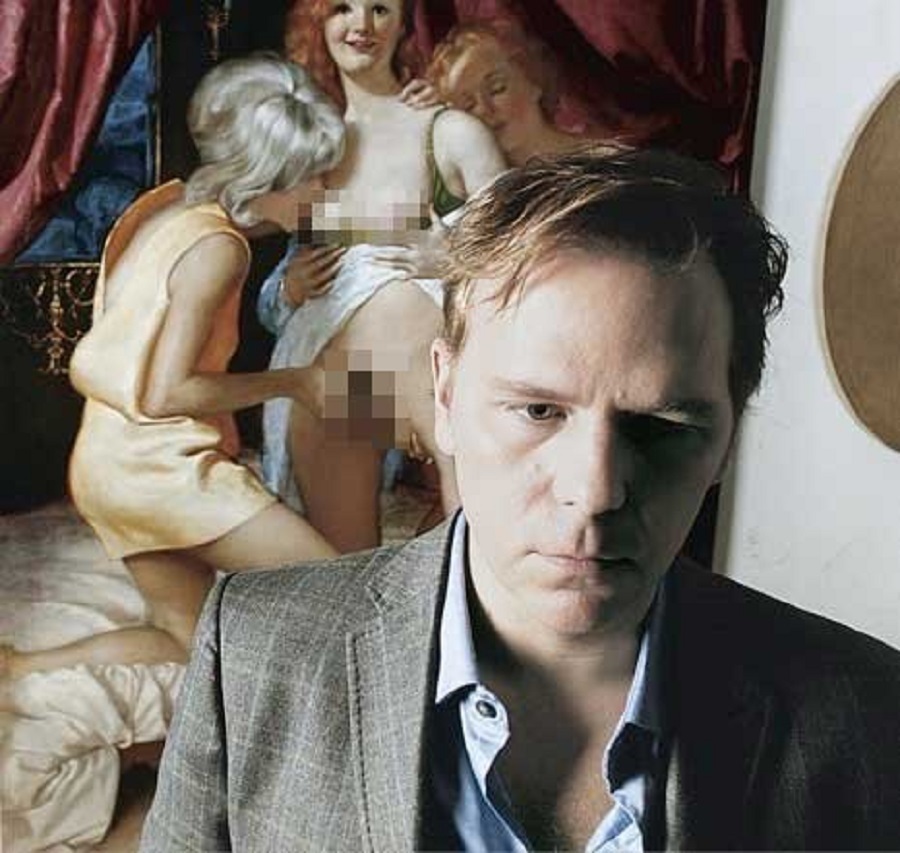
His broad knowledge of 19th-century forms of painting — in terms of colour, composition and overall aesthetic — by French and Renaissance artists can be seen in his work, as well as his references to a wide variety of artistic movements.
The artist’s work represents a fascinating dialogue between contemporary and high culture, comfortably mixing painting with popular magazines and models while deforming the female body. These are clearly bourgeois works which play on the mix between irony and 80s sentimentality. In the female portraits in particular, the influence of Cranach and Italian mannerism is evident.
Currin’s fascination with body cult, social hypocrisy and sexual desire is present in works such as “Thanksgiving” (2003), where moral freedom is portrayed in the faces of three women feasting: a reference to modern society’s vulgarity within a scene of great beauty.
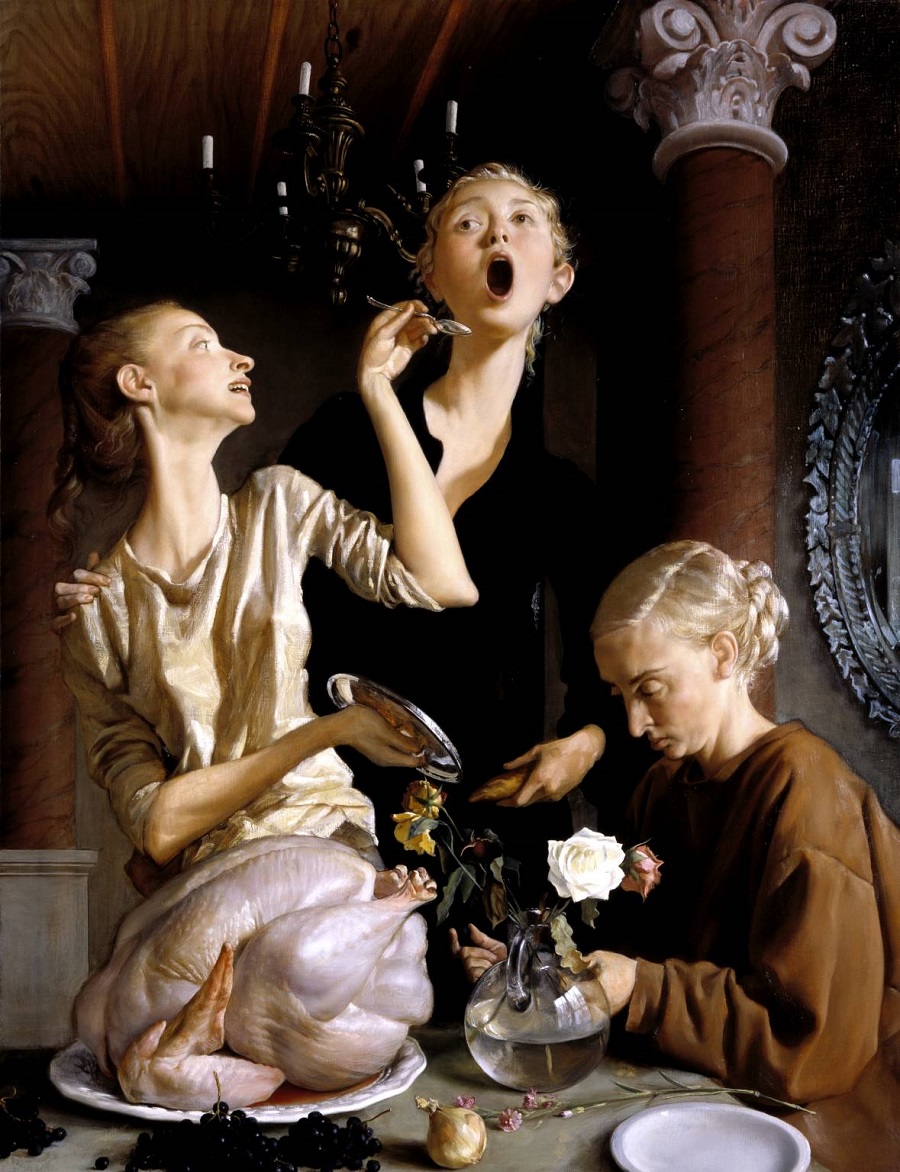
In the past he has participated in collective shows together with other great painters in New York’s Whitney Museum and also in London’s Whitechapel gallery, but his first solo exhibition was “Mid-Career Retrospective” at the MCA in Chicago, consisting of works from the 90s to the present day which subsequently made their way to London’s Serpentine Gallery.
Currin’s style has been called misogynistic and pornographic, but that’s not stopped his paintings from enjoying huge commercial success.
In “The Dogwood Thieves” (2010), displayed in the Gagosian Gallery, the bright red ribbon is a clear example of the sharpness of his vision — although Currin faithfully represents the details of life, the end image is almost unnatural, and it’s precisely these small natural/unnatural details which carve him apart from other painters of his generation. Each minute detail gives off a grotesque, absurd effect, which at the same time transmits to the viewer the artist’s great skill.
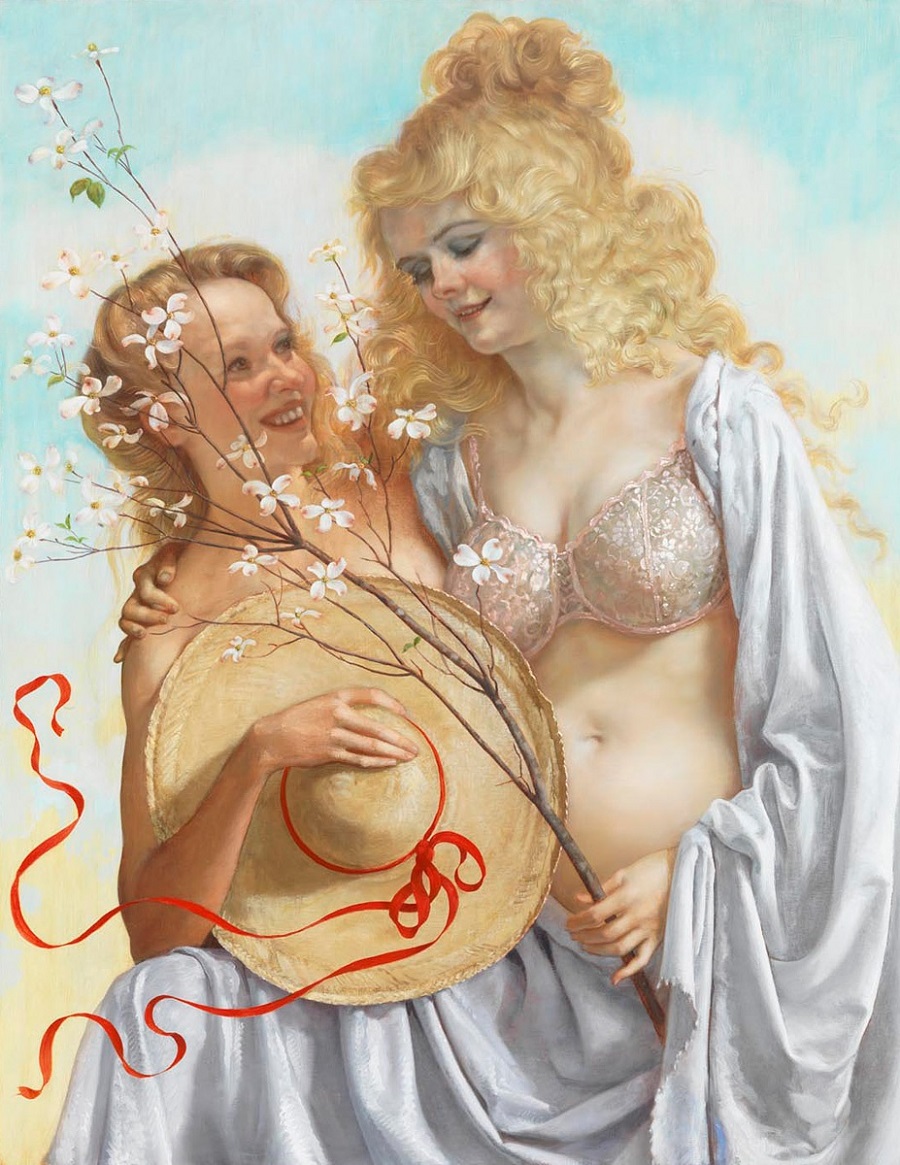
Another of his important works is “The Women of Franklin Street” (2009): the sexually explicit painting represents three loosely dressed women — the one in the middle clearly displaying a sadistic demeanour through her almost frozen facial expression — in a scene that somewhat furthers the idea of the female form as object.
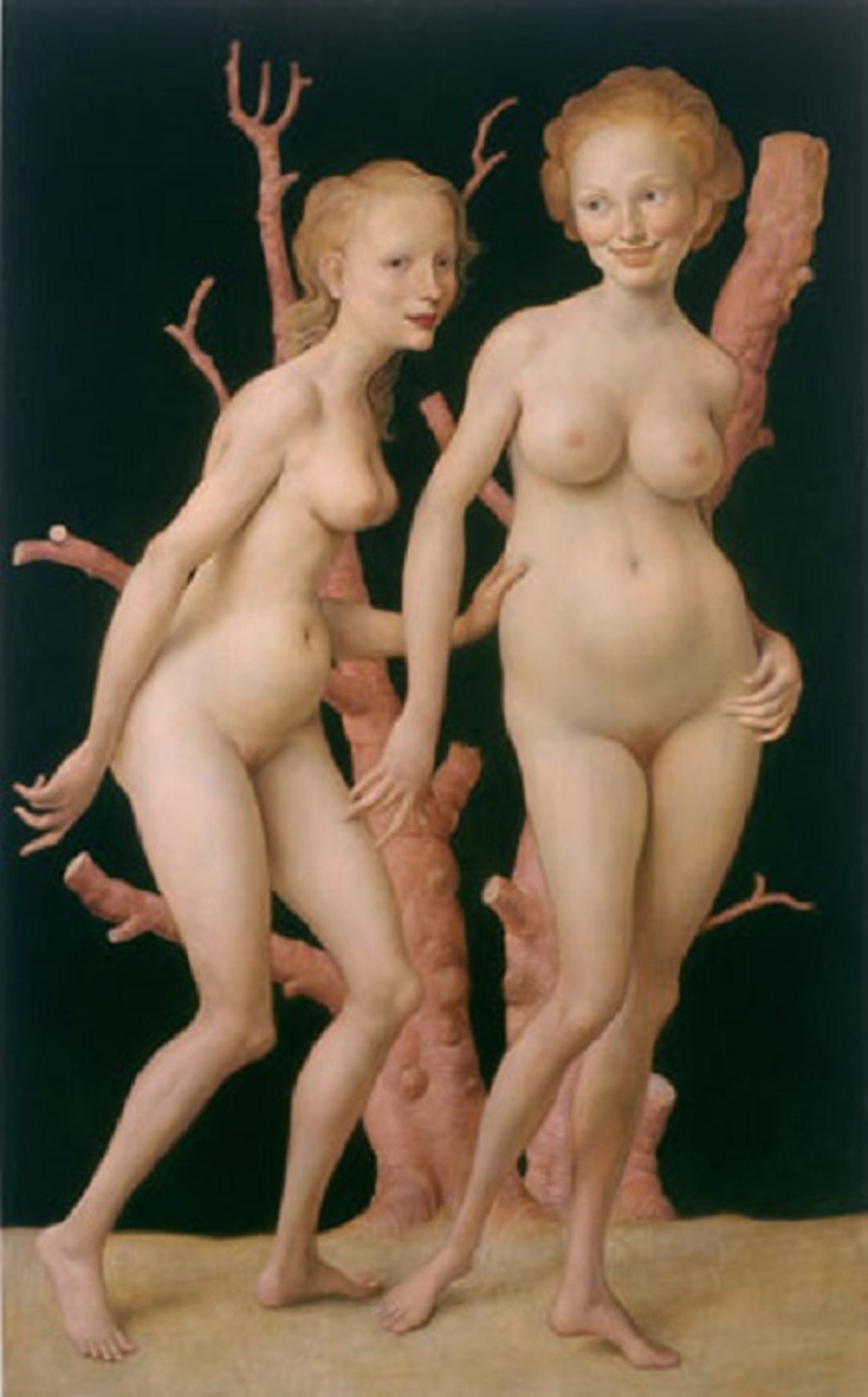
Admittedly, some of his paintings seem to be mocking society’s moral values, but for all of their pornographic content, they are still technically excellent pictorial works.
Currin is often criticized for being a masculine artist whose representations of women are simply of bad taste, yet the controversy and different interpretations of his creative work only serve to heighten his appeal and interest among the public.
His paintbrush is provocative, yet it manages to skillfully make art out of the tasteless. He combines the traditional with the contemporary in his drive to show us ugly, grotesque figures, without judgement, with a mix of sensuality and common vulgarity.
“I've always liked things that pretend they're sensationalistic entertainment yet have a hidden or deeper structure — something that's absolutely mediocre but perfect, like a soft rock song that's perfectly memorable, that has this incredibly long life and persistence, that's so average but crystalline.” John Currin.
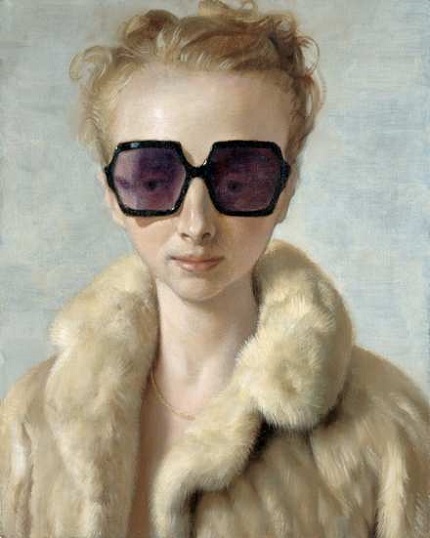
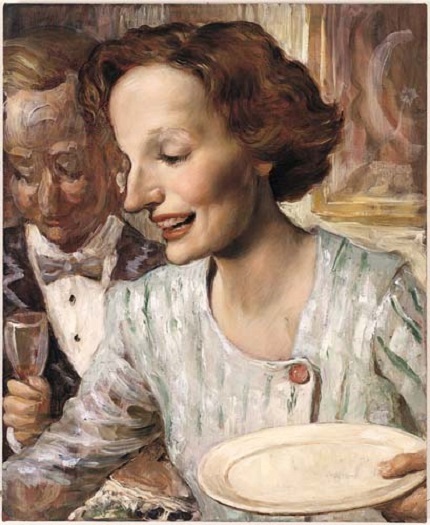
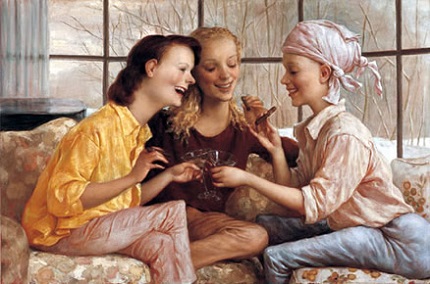
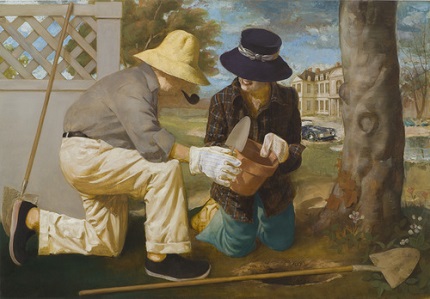
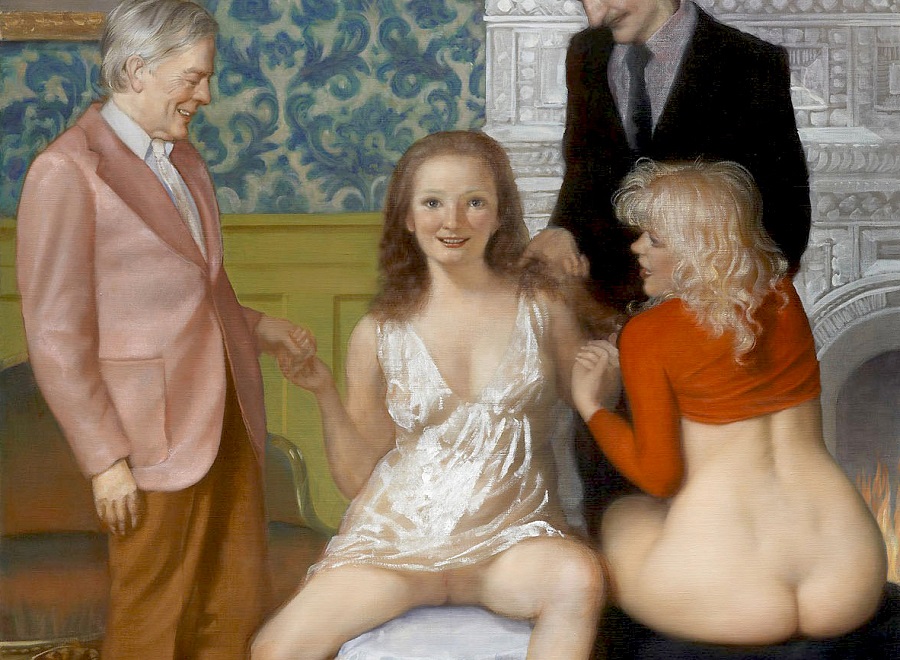
- Details
- Written by Clelia
Peter Doig, experienced painter of Scottish origin born in Edinburgh in 1959, is currently considered one of the best painters of his generation, his works commanding extraordinarily high prices. In his early childhood he moved with his family to Trinidad and Tobago, and in 1966 to Canada. 13 years later, in 1979, he took up residency in United Kingdom, where he began his studies at the Wimbledon School of Art and then went on to study at the Saint Martin's School of Art before obtaining an MA at the Chelsea School of Art.
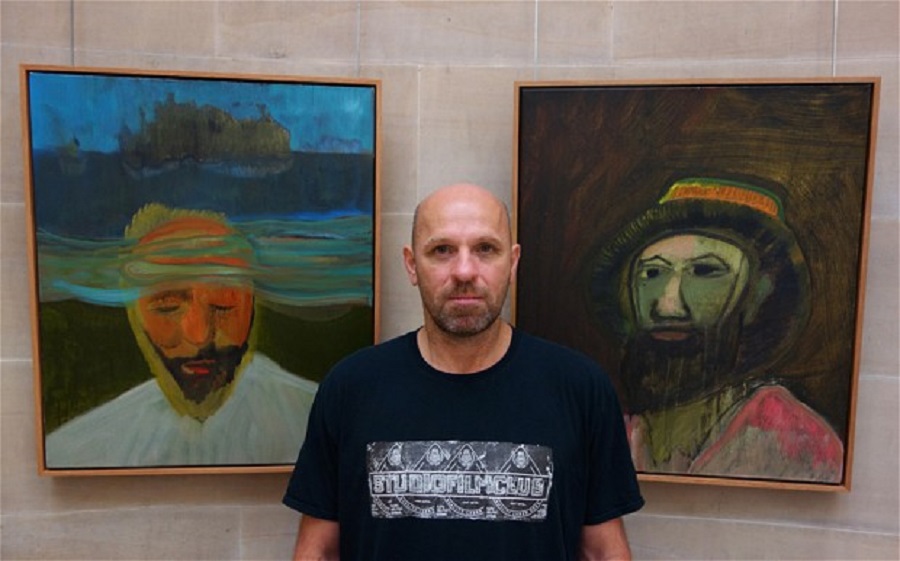
His art career led him back to Trinidad in 2002 where he opened his own art studio in Port of Spain. Since then, his career has enjoyed tremendous growth. In the following years he frequently travelled to London, New York and Düsseldorf, where he became art professor at the Kunstakademie (Academy of Fine Arts). Doig's work, often based on films and photographs, maintains a perfect balance between the figurative and the abstract. His work covers a wide range of themes, yet his influences are always clear, be they Canadian landscapes or elements from his own personal interests. His best-known work, "White Canoe", sold for over $11m, becoming the most expensive painting by a living European artist.
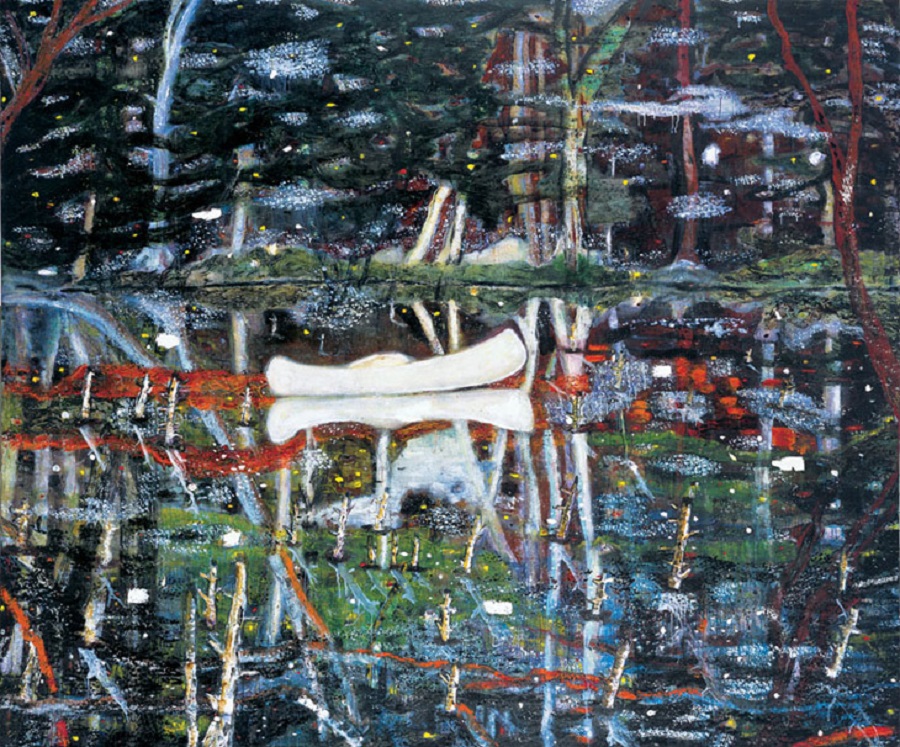
Doig's paintings are heavily influenced by painters such as Monet and Munch, and more broadly by Impressionism, Post-Impressionism and Expressionism. Despite the passing of time, his work originates from the experiences he lived during his early childhood, a time full of memories expressed purely and emotionally thanks to his meticulous technique. In 2008 the Tate Britain, which houses London's largest collection of paintings, exhibited a retrospective of his work including 50 oil paintings and other works on paper from the last 20 years of his career, and which are now part of the gallery's public and private collections. Another exhibition, titled "No Foreign Lands", was on show at Scotland's National Galleries and contained many of his best paintings.
In his paintings Doig reflects the deepest parts of his soul, a reflection which guides his work and which has become the cornerstone of his artist career. He takes to heart Robert L. Stevenson's quote, "There are no foreign lands. It is the traveler only who is foreign", its idea being manifested in the surprise and delight he experiences before the beauty of a landscape, even though it is familiar to him having been part of his surroundings for years. He observes the world around him with the wonder of a tourist who gazes in awe at a monument for the very first time.
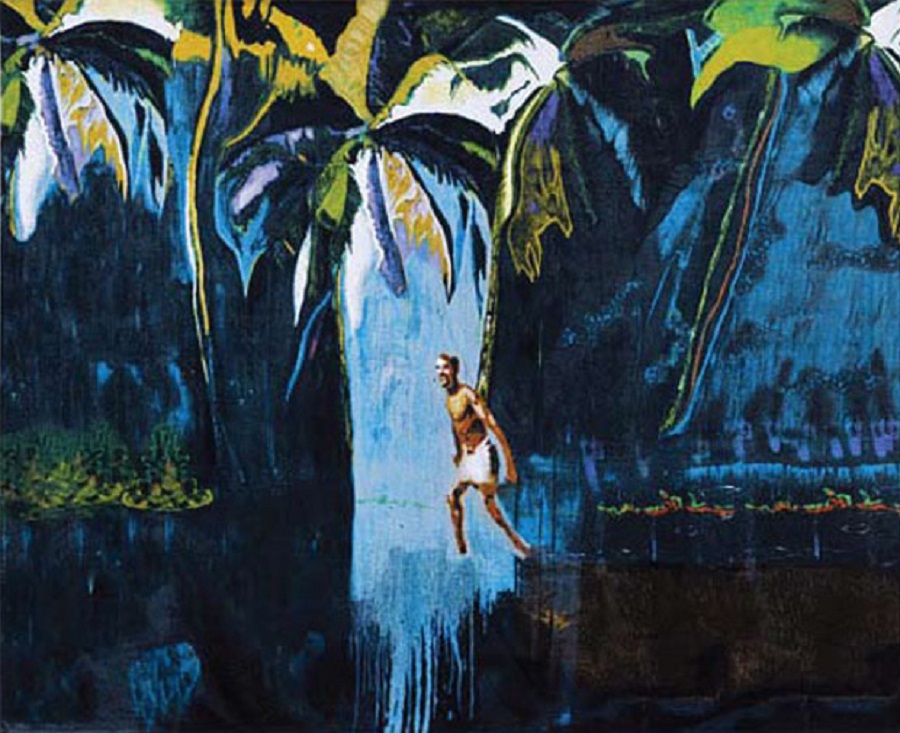
His past work also includes portraits of figures alone in the middle of wild natural settings, a clear example of which is "Red Boat", where the force of nature's colours and of the figures' structured shapes grabs the attention of the viewer. His photorealistic style allows us to classify his work into "white works" and "dark works", terms used by some galleries. An example of the latter group is "Unité d'Habitation de Le Corbusier", in which he resided for a period of time. In this work he represents local characters and the almost wild nature of the places that became his everyday surroundings, using a bright palette to give the images a great vitality.
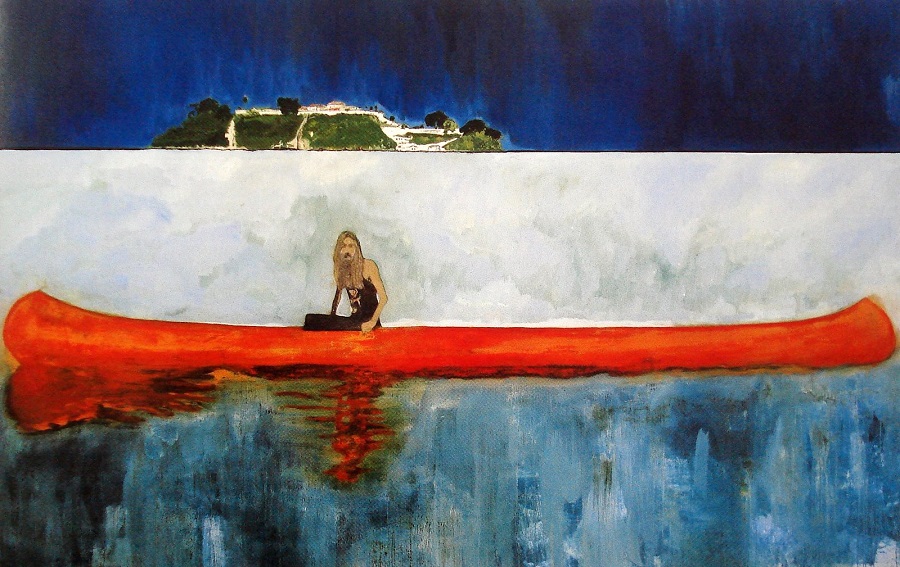
His work as a whole has become an homage to the artists he admires: Edward Hopper, Paul Gauguin and particularly Edvard Munch, as he himself has claimed. In 2013 Doig's paintings reached record sales figures, placing him in the same league as Jean-Michel Basquiat and Jeff Koons. In particular, his work “The Architect's Home in the Ravine” fetched €2.7m more than Dalí's most expensive painting at Christie's, becoming one of the world's most expensive paintings.
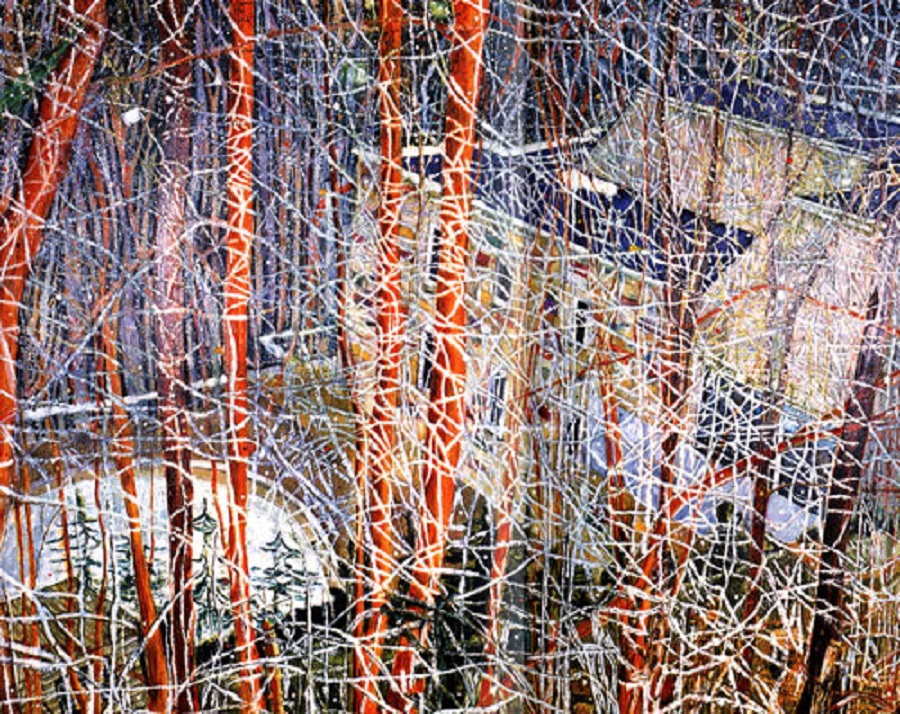
According to well-known art critic Adrian Searle, his painting technique can be described as a mixture of sources, influences and styles, a synthesis of popular imagery, autobiographical and imaginary elements, always perceived by viewers intuitively and via a kind of osmosis. There is no doubt that Peter Doig is an artist who feels what he paints, and who spends more time thinking about his work than he does producing it. In a number of interviews he has come across as a romantic who is open to sharing his sadness and longing for a different, foreign world. His artwork, although based on fantasy, is also recognizably realistic and not without a hint of nostalgia. He sees landscapes as metaphors for his own inner life, externalizing it and making it credible through the process of capturing it on canvas. Of his own work, he says, "Each painting is an idea. Each painting is the result of a process. Conceptual art takes away the joys of observation - colour and beauty."
A selection of his works has recently been exhibited at the Montreal Museum of Fine Arts, between February 7 and April 14, 2014.
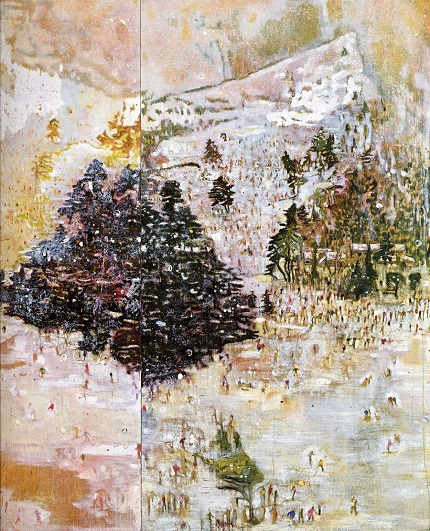
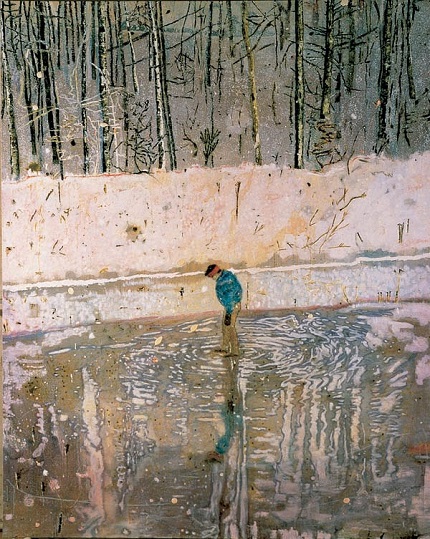
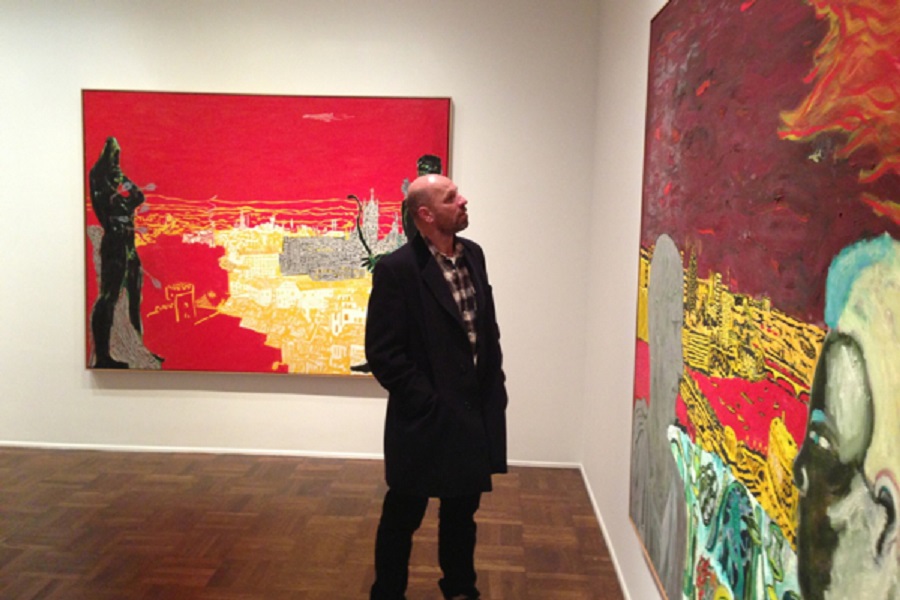
- Details
- Written by Clelia
Born in 1957 in Beijing, Ai Weiwei is a multidisciplinary artist, architect, photographer, designer, critic and activist, son of well-known Chinese poet Ai Qing, himself a studnet of avant-garde theory in Paris between 1929 and 1932. Qing, a great influence on Weiwei's way of thinking, also studied cinematography and was part of the Xingxing group, where he devoted his time experimenting with individualist techniques and which was eventually dissolved by the authorities of the time. In USA he got involved in Minimalism, Pop Art, conceptual art and Dadaism. In his work Weiwei manages to harmonize Western postmodernism with the tendency towards handcrafting, most present during China's cultural revolution. He is incredibly skilled in merging the past with the present, while showing the conflict that exists between perception and pure concept.
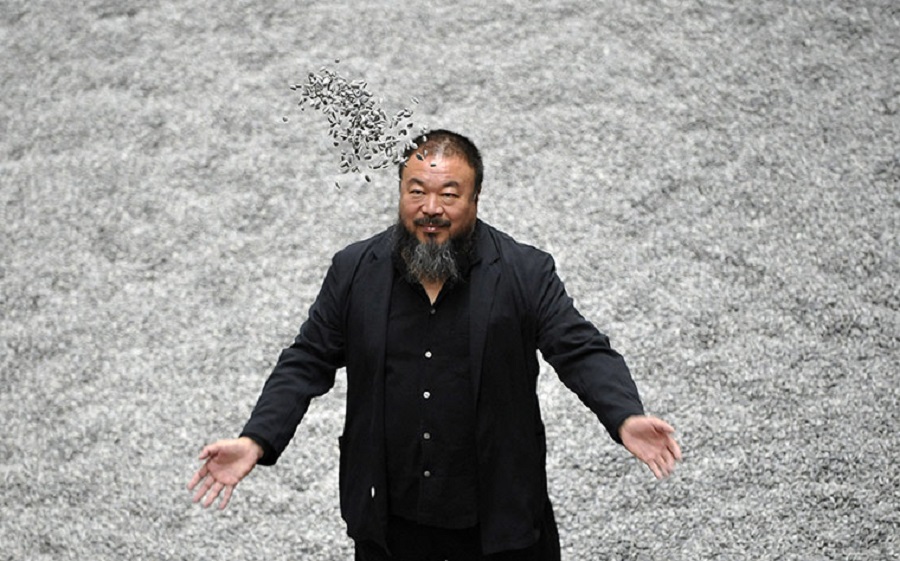
His work "Coca-Cola Vase" shows the weight of modernist tendencies - the influence on this piece of artists such as Andy Warhol and Marcel Duchamp is evident. Another piece clearly influenced by a number of different sources is "Forever", where bicycles joined together by their wheels form an example of a ready-made.
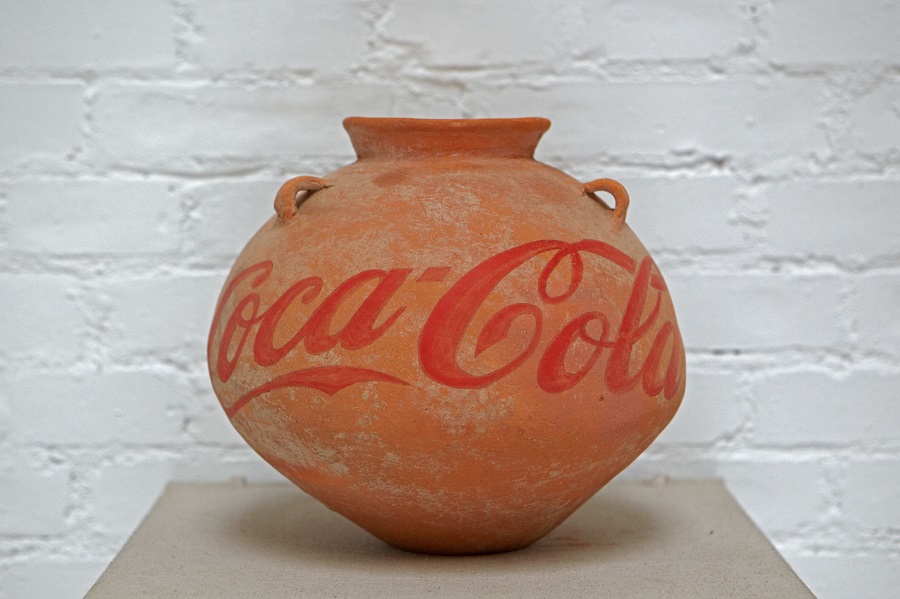
In each work by Ai Weiwei, there is a sense that he is fully fleshing out its feelings and concepts, also manifested physically in his large-scale sculptures such as the "Bird's Nest", created for the 2008 Olympic Games in Beijing in collaboration with architects Stefan Marbach, Pierre de Meuron and Jacques Herzog. Tradition and politics are present throughout his work, be it exhibitions, sculptures, photographs or architecture - his outspoken defense of human rights and his opposition to abuses of power are synonymous with his name, the general public remembering his imprisonment for these very reasons.
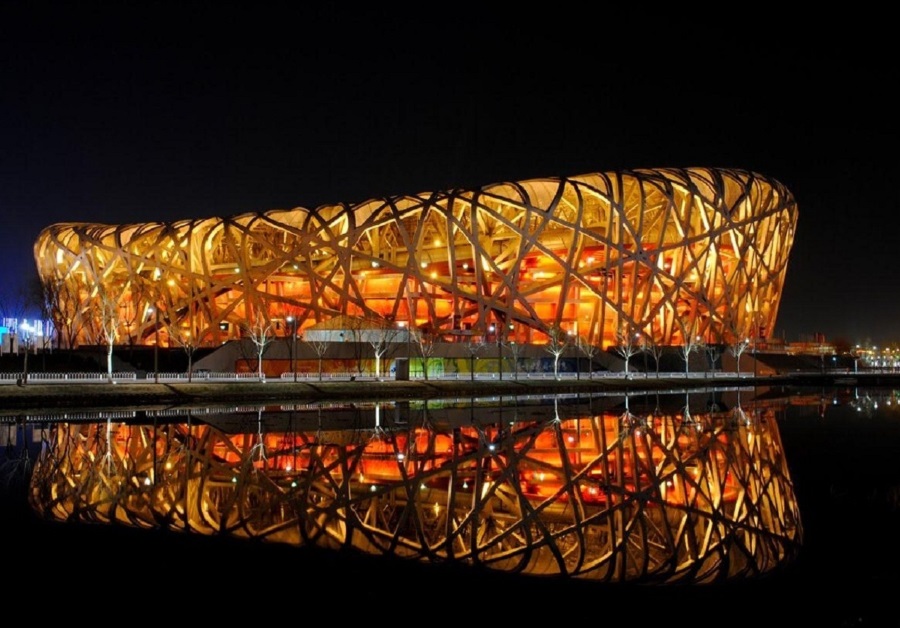
His role as an activist should not be forgotten, either - he has publicly condemned a number of Government acts and positioned himself firmly on the side of human rights, to the extent that his studio, valued at over €1m, was destroyed by the Chinese authorities. In 2011 his family announced his disappearance; he was subsequently freed but placed on house arrest, which led him to create a Big-Brother style reality show from his own home, but which in turn was taken down by the regime. Ai Weiwei is the critical voice of the Chinese government, an important intellectual figure whose work consistently shows maturity and social commitment. Throughout his career he has exhibited in a number of different countries and he is currently active in his profession as architect - although he continues to appear in the media due to his arrest and imprisonment, he is still recognized globally for his art work.
The artist's work is often displayed in large venues due to its size. One of the more remarkable items is his series of photographs, where he is seen allowing a jug belonging to the Han dynasty to fall on the floor, crashing into pieces.
He has exhibited in some of the most important galleries and museums in the world, as well as participating in the Venice Biennale and Kassel's Documenta. In 2010 he designed the successful Tate Modern, covering the museum's turbines with porcelain pipes, collaborating with Chinese artisans to create 100m copies.
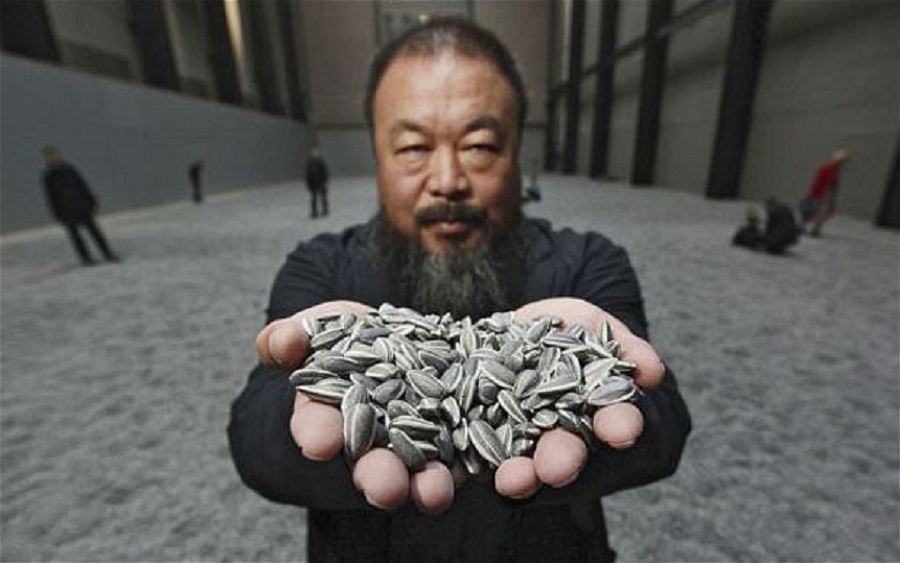
His first truly international show took place in 2012, however he was unable to attend due to his exile, having been accused of conspiracy in his native country by the Chinese government. The exhibition was a retrospective titled "Entrelacs" and was dedicated to Jeu de Paume - it consisted of 500 photos, videos and texts, bringing together across different formats the key moments of his life. When the exhibition opened in Paris, the Chinese embassy was not invited, but it managed to run smoothly in Spain where it was represented by the well-known gallery Ivorypress.
In 2013 Weiwei presented his exhibition "Resistance and Tradition" at the Centro Andaluz de Arte Contemporáneo, which also included the release of the document "Never Sorry" by Alison Klayman - a biopic of the artist touching lightly on contemporary China. David Harvey was reported as saying that the artist "merges China's tradition of culture, Western art and a variety of techniques to uniquely express information capitalism." His most representative works include "Bird's Nest", "Snake Ceiling", "Descending Light", "Cube Light", "Rooted Upon" and "Remembering".
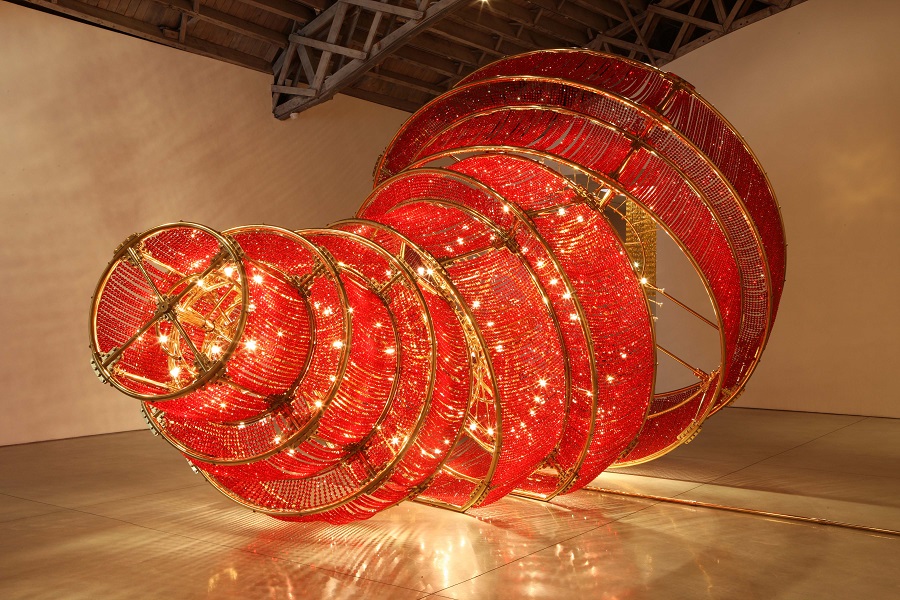
His work can currently be seen in the UK at an exhibition titled "According to What?", open until August 10, 2014. The exhibition includes old chairs representing former dissidents of the Chinese government, banned from travelling by the authorities. According to Clare Lilley, despite the individual chairs giving an impression of "calm and peace", the intended message is that "life is incredibly difficult and violent for millions of people".
Throughout the summer, Ai Weiwei will exhibit at the Martin-Gropius-Bau in Berlin and also in New York. Full details can be obtained in our article on the Top 10 Exhibitions in New York.
